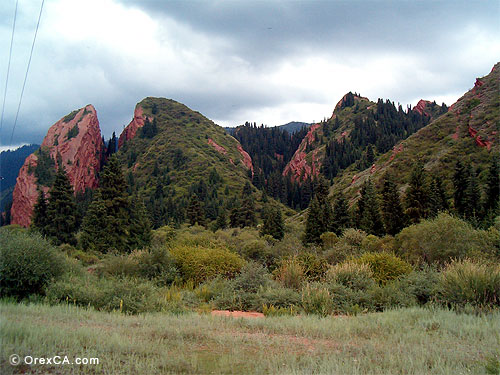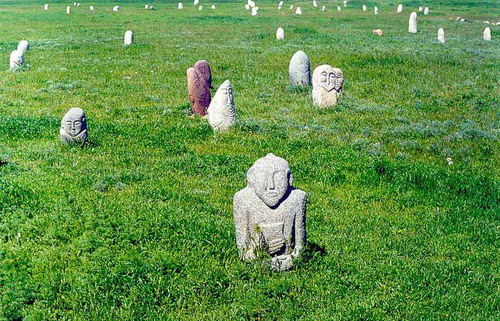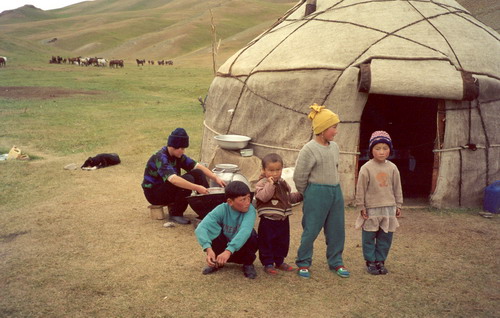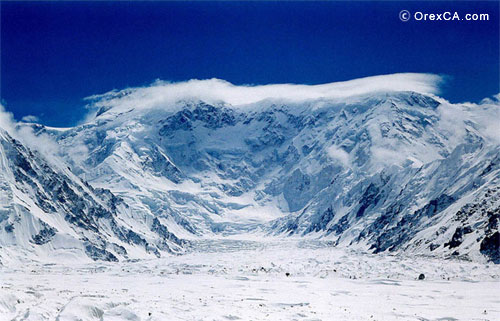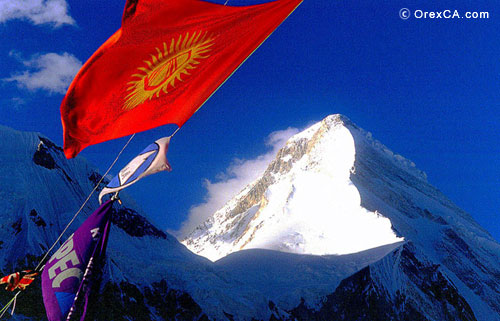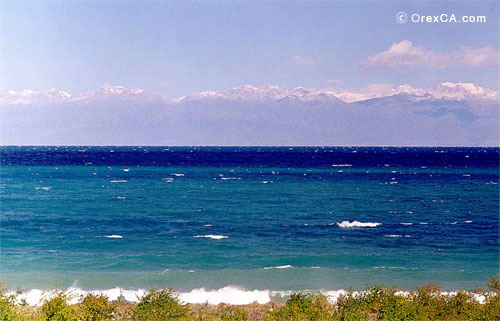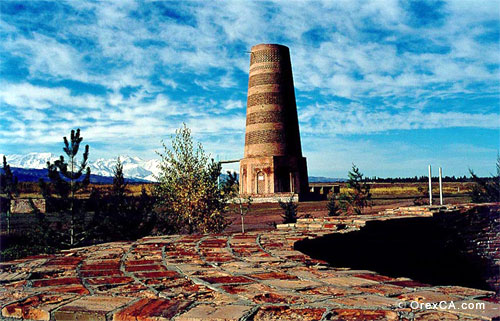History and people
History of Kyrgyzstan, pictures of Kyrgyzstan. Kyrgyzstan Travel Information
"A man should move because the sun, moon,
star, animals, fish - everything moves
and only the land and dead creatures
stay where thay are", say nomads.
A 7th century visitor to Kyrgyzstan commented on its "tall peaks that reach to the very sky" and warned travellers against being "molested by dragons". The dragons have Song gone but the peaks remain - as does the sense that you are venturing into a land of mystique and adventure, of untold possibilities and remote, achingly beautiful wilderness.
It's striking that this land, crossed by centuries of Silk Road travellers, wandered by generations of nomads and the battleground of Chingiz Khan and other warring tribes, remains so little touched by man's hand. Kyrgyzstan's cities may retain a Soviet face, legacy of its 20th century past, but its soul lies in its silent mountains, vast skies and open landscapes.
Despite its small size, Kyrgyzstan boasts a wide variety of terrain: velvet alpine pastures, jagged snow-capped peaks, sweeping steppe grasslands and dry desert syrt. Lucky visitors may see the rare Marco Polo sheep and even rarer snow leopards which patrol the icy summits. But one gift is bestowed freely on all visitors - the life-enhancing joy that comes from exploring Kyrgyzstan's wild places.
The mountains of Kyrgyzstan are the cradle of its people. The landscape has shaped and preserved their nomadic lifestyle and culture for centuries. Step behind the veil of hills which line the roads to discover a world of yurts, galloping horses, grazing livestock and colourful carpets: a world that conjures up the great encampments of Chingiz Khan - here is the heart of Kyrgyzstan.
History and legend come together in the story of how the nomadic Kyrgyz tribes came to inhabit their mountain stronghold. Red-haired and blue-eyed, they are believed to have migrated from the Yenisei River in Siberia between the 9th and 12th centuries. Central Asia's steppes and mountains had been home to waves of nomadic empires for thousands of years and the new arrivals found themselves fending off constant invasions by warrior tribes.
When the fiercest of the invaders, Chingiz Khan, swept through in 1219, life changed forever. The Mongol Empire stretched across the region, razing the Silk Road oases of Samarkand, Bukhara and Khiva to the ground. The Kyrgyz owed their survival to their nomadic mountain lifestyle, intricately evolved over 2,500 years, and their excellent horsemanship, which gave them supremacy over sedentary peoples.
Early travellers to the region were struck by the impressive Kyrgyz camps with 50 or more yurts. These ails were led by a manap (chief) with the help of aksakals (advisors). The most senior man by birth, he not only had to be wise but also wealthy enough to fulfill his duties of hospitality. If he became too autocratic, the ail could move away to join another group.
Exquisite horsemanship was shown off at festivities during the day but eloquence and poetry were also highly prized. In the evening, around the fire, akyns (bards) would improvise verses and compete with each other in witty banter, astonishing visitors with their verbal dexterity.
The Kyrgyz settled into villages in the mid 20th century during the Soviet period but their identity is firmly rooted in their nomadic heritage and they still have a passion for their horses and akyns. The country is proud to have been the first of the former Soviet states to declare independence in 1991 - a sign of their determination to forge their own destiny.


